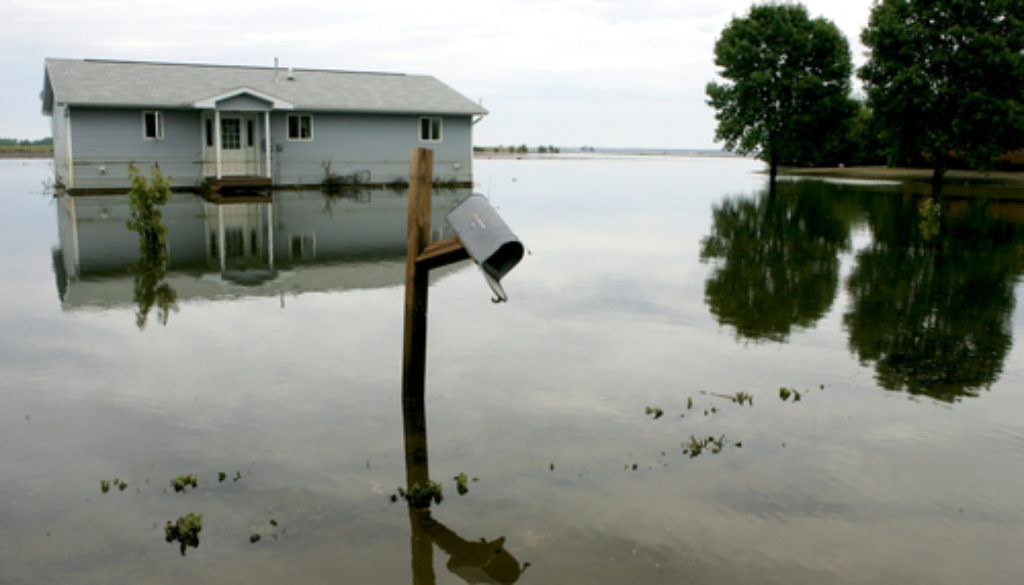US Coastal Cities Face Increased Risk of Flooding
By Joel Scata, Natural Resources Defense Council
In the US, the economic, environmental and social impacts of flooding are severe. Flooding presents a serious risk to our physical infrastructure – our roads, bridges, and water treatment facilities – which are essential to the well-being of the nation. Unfortunately, according to a new study published in Nature Climate Change, US coastal cities are facing an increased risk of severe flooding due to a phenomenon known as compound flooding.
It occurs when storm surge and heavy rainfall combine forces, delivering a one-two punch to the affected area by exacerbating the level of flooding that normally would have occurred if one of these events happened in isolation.
These combined flooding events usually happen in one of two ways. First, heavy rainfall on land can severely add to the depth and size of storm surge that forces its way up and over the shoreline. Second, storm surge can elevate sea water to a level where the gravity-driven flow of stormwater systems is greatly slowed down or blocked, and therefore it backs up onto the streets and into people’s basements.
According to the study, the number of these double-whammy flood events has increased significantly over the past century for many US cities. For example, New York City’s chances of experiencing a weather scenario that combines simultaneous storm surge and heavy rain into a single event has actually doubled over the last 60 years ago, resulting in more frequent flooding.
Given that nearly 40% of the US population resides in coastal communities, this is a problem that will affect millions of people and properties, as sea levels rise.
Mitigation
Adaptation and resiliency measures, such as building flood-prone infrastructure higher or investing in green infrastructure for stormwater management, are important planning considerations for minimizing future disaster costs. Pre-disaster mitigation efforts are proven to reduce the associated costs of post-disaster recovery. The benefit-cost ratio of FEMA Hazard Mitigation grants is illustrative of this assertion: every dollar spent on a FEMA hazard mitigation grant produced, on average, four dollars of benefits–a significant return on public dollar expenditures. The benefits of hazard mitigation are the avoided losses, ones that would have occurred if mitigation had never been implemented.
Higher Flood Waters
Successful flood mitigation may include a variety of actions such as elevating a structure above the base flood level or installing vents in the foundation that allows flood waters to pass through reducing the potential for building collapse. Or it may take the form of the ultimate mitigation action — permanently moving people out of harm’s way.
Here’s a closer look at specific actions NRDC recommends we should take, right now, to account for the rising risk of flooding:
- Implement President Obama’s updated flood protection standard. The Federal Flood Risk Management Standard ensures federal agencies build bridges, schools, and water and wastewater treatment plants to better withstand flooding and storm surges from hurricanes. Unfortunately, members of Congress are trying to prohibit federal agencies from implementing this much-needed reform, despite the long-term savings to taxpayers.
- Make it easier for people to relocate to higher ground. NRDC has developed a proposal for reforming the National Flood Insurance Program that would make insurance more affordable for low- and middle-income property owners, while also guaranteeing them assistance to relocate after suffering major flood damage.
- Better assess the risks of extreme rainfall and flooding due to climate change. At NRDC’s urging, FEMA recently decided to require states to include an assessment of climate risks when developing disaster preparedness plans, also known as Hazard Mitigation Plans. These plans are important sources of information about community vulnerability and are used to prioritize how best to mitigate risks from future extreme storms and flooding.
Blocked Stormwater Systems
Where storm surge elevates sea water to a level where it blocks a stormwater system from doing its job, the use of green infrastructure is a potential solution. Green infrastructure is designed to block or reduce the amount and rate at which rain water enters a stormwater system. Green infrastructure techniques can take many forms, such as green roofs, rain gardens, roadside plantings, porous pavement, and rainwater harvesting. These techniques use soils and vegetation in the built environment to absorb runoff close to where it falls, limiting flooding and sewer backups. Green infrastructure is ideal because it not only reduces flooding in the urban environment, but also decreases pollution. Also, techniques like rain gardens can provide important green spaces for communities.
Flooding is a fact of life for many coastal residents. Storms will continue to lash our coasts and heavy rains will continue to fall, but our nation should be sure that when those events occur, we’re as prepared as possible.

